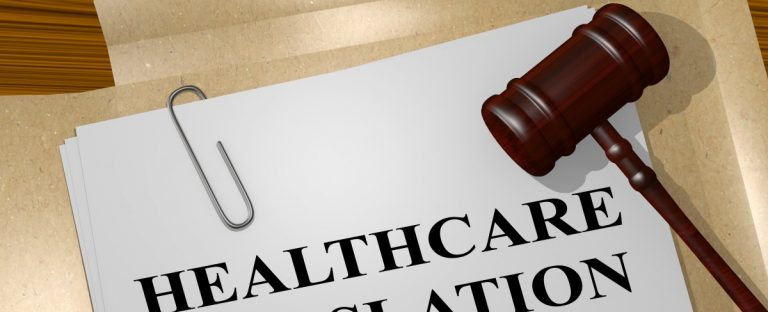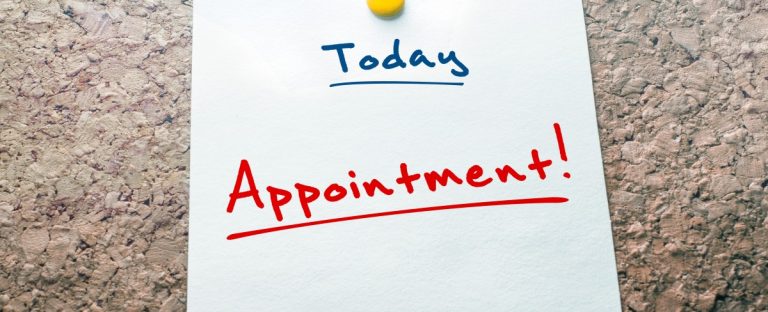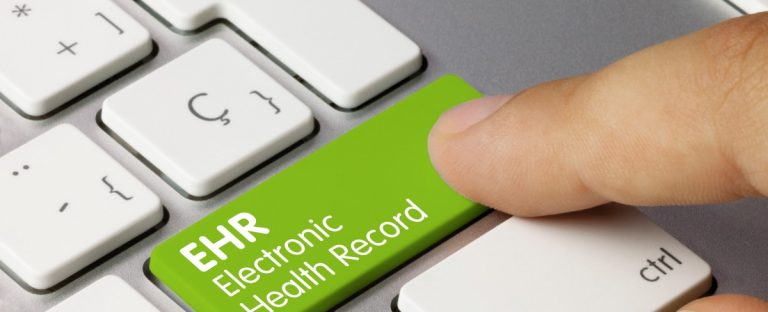The healthcare revenue cycle is fraught with various moving parts and pieces that can throw a wrench in your financial performance; one such example is that of rejected claims, which can delay your payment for services rendered, cause extra stress, and result in lower financial performance for your holistic practice.
The ideal metric for tracking the performance of your claims processing strategy is to have a 95% or higher clean claims rate—in other words, you want to aim for at least 95% of your claims to be processed without issue. These clean claims demonstrate that your medical coding and medical billing approach is effective and efficient. Reworking rejected claims costs your practice time and money, plus it causes unnecessary headaches.
While a 95% clean claims rate is ideal, the reality is that practices average 75-85% clean claims, which means that up to a quarter of revenue is being held up by rejected claims. If your holistic practice accepts insurance or patients covered by Medicare, then this can significantly stymie your healthcare revenue cycle.
Hence minimizing rejected claims is a priority; in this article, we’ll dive into how rejected claims help your practice, hinder your practice, and some best practices for the medical billing and coding process.
How Rejected Claims Help Your Practice
It might sound counterintuitive, but if you shift your perspective to see rejected claims as something that can help your holistic practice, then you’re already on the right track.
Rejected claims can present an important opportunity for your holistic practice’s overall revenue cycle in terms of revealing the points of improvement in your medical coding and billing process.
Rejected claims were, more often than not, rejected for important reasons—maybe the claim wasn’t completely filled out, perhaps the codes were inaccurate or didn’t fully illustrate the services rendered, or something else happened.
Gather your rejected claims over the last 6 months or so and evaluate the frequency of claims being rejected, the reasons for the rejection, and the average time it took to correct and resubmit the claims. Armed with this information, you’ll notice where the points of improvement exist within your medical billing process.
Maybe you need to update the list of frequently-used medical billing codes that you reference when filling out your claims or perhaps one important part of the claim is constantly left blank by accident. Whatever the case, taking the time to see why the rejected claims are happening can empower you and your holistic practice to refine your internal medical billing and medical coding process.
Since insurance or CMS claims can be a significant portion of your holistic practice’s overall healthcare revenue cycle, rejected claims can reveal where your financial performance needs more attention or education.
How Rejected Claims Hurt Your Practice
Of course, on the other hand, if you can avoid dealing with rejected claims then you should absolutely do so! These types of claims cost your holistic practice time and money and negatively impact your revenue cycle.
By having to spend more time reworking a claim, you’re unable to focus on more strategic initiatives like your marketing presence or attend to patient feedback. Plus, this time spent costs money; whether it’s the time you spend on the clock or paying for a team member to tackle the rejected claims issues, reworking claims can be costly.
If the average cost for filing a claim is $6.50, the average cost of a reworked claim is $25. This might not be too bad to deal with when only one or two claims need to be reworked, but if your holistic practice is dealing with dozens of rejected claims, then this amount can quickly add up!
For example, if you have 100 rejected claims in one month, you’ll have to spend an additional $2,500 per month. Now, think about it from an annual standpoint—that’s a whopping $30,000 each year. Plus, rejected claims result in delayed reimbursement, which slows down your practice’s revenue cycle and skews your financial performance metrics.
4 Steps to Minimize Rejected Claims
So what are some steps you can take to minimize the amount of rejected claims your holistic practice has to deal with? Check out these tips:
Verify Patient Eligibility Prior to the Date of Service
Established patients are great for your practice, but make sure you don’t assume their insurance coverage hasn’t changed over time. Simply asking them at every visit if their coverage has changed or if they have any patient information updates can save you and your practice time later down the line. Outdated patient information is a tremendous source of rejected claims, so take the extra minute ahead of time to confirm your patient’s information before proceeding with the claim.
Double-Check Medical Coding Modifiers
The world of medical coding and medical billing is complex and intimidating; one crucial step in the medical coding process is to verify that you’re utilizing the correct medical coding modifiers. These modifiers might seem too small to matter, but your claim can be rejected if not appropriately coded!
File Your Claims In a Timely Manner
Insurance companies and CMS typically require you to submit claims within a tight window of time, and missing that window can increase your chances of a rejected claim. Be sure to pay attention to claim filing deadlines and keep in contact with the pertinent insurance company if you encounter issues or have questions. Resolving any issues before filing a claim—while staying within the timeline—can help ensure your claim goes through without any troubles.
Outsource Your Medical Billing Altogether
If you find yourself and your team members swamped with rejected claims and simply wish you could make that part of your holistic practice disappear, then it’s time to consider partnering with a medical billing firm!
Outsourcing your medical coding and medical billing process to a trusted partner can immediately boost your revenue cycle and keep your holistic practice’s finances running smoothly. Plus, with the medical billing partner, you won’t have to worry about keeping up with esoteric legislation that impacts the billing process or stress about reworking claims since they’ll be handled correctly from the beginning.
Consider partnering with Holistic Billing Services to comprehensively manage your medical billing process so that you can focus on what matters most: your patients. Our experts have experience in your specialty, and we’re eager to help your holistic practice thrive!
Healthcare legislation can be tricky to navigate, especially when you’ve got a million other things on your plate. However, it’s still essential to keep up with because it can impact your holistic practice, healthcare revenue cycle, and patients.
One recent example is the No Surprises Act, which affects you, your patients, and your revenue cycle. This piece of healthcare legislation essentially aims to refine the medical billing process at the federal level—and we’ll dive into the details in this article here.
Keep reading to learn more about the No Surprises Act and its effects on your holistic practice!
What Is the No Surprises Act?
To sum up the No Surprises Act in one sentence? It’s intended to comprehensively mitigate surprise medical bills, which often occur when insured patients inadvertently receive care from out-of-network providers.
At the end of 2020, this piece of healthcare legislation was signed into law to provide federal-level protections for consumers against surprise medical bills. According to the handy Key Takeaways listed for the No Surprises Act, this legislation:
- Protects patients from receiving surprise medical bills resulting from gaps in coverage for emergency services and certain services provided by out-of-network clinicians at in-network facilities, including by air ambulances.
- Holds patients liable only for their in-network cost-sharing amount, while giving providers and insurers an opportunity to negotiate reimbursement.
- Allows providers and insurers to access an independent dispute resolution process in the event disputes arise around reimbursement; the legislation does not set a benchmark reimbursement amount.
- Requires both providers and health plans to assist patients in accessing health care cost information.
This Act was part of the Consolidated Appropriations Act of 2021, which handled a variety of public health and private insurance issues, and a majority of the initiatives outlined in this legislation took effect on January 1, 2022. The Departments of Health and Human Services (HHS), Treasury, and Labor are responsible for issuing regulations and guidance to implement many of the regulations.
How Does The No Surprises Act Impact Your Holistic Practice?
While sections of this new legislation won’t apply to your holistic practice—such as sections 105 and 106 that deal with air ambulance services and charges—there are still some important parts that might impact your practice, especially if you’re contracted with private health insurance companies.
The primary effect that this healthcare legislation has on the medical billing process is that out-of-network providers can’t bill patients for excessive charges, nor can the patient be held responsible for such charges.
How Does This Healthcare Legislation Impact Your Patients?
Ultimately, the No Surprises Act leads to enhanced transparency and patient engagement in the financial workings of your holistic practice. By increasing patient understanding of the medical billing process and what they are responsible for in the healthcare revenue cycle, patients can make informed decisions regarding their care.
Patient education and patient engagement are vital for your holistic practice, regardless of accepting insurance. Initiating the conversation with your patients about their responsibility for paying for services rendered is helpful because it encourages their questions and concerns. Utilizing these lines of communication can build rapport and trust between your patients and your holistic practice.

3 Medical Billing Tips for Your Holistic Practice
Whether your holistic practice is significantly or minimally, your healthcare revenue cycle and medical billing process can always benefit from a few tips:
Keep Patient Information Updated
From contact information to insurance carriers and more, there’s a lot of patient information that can change over time. Inaccurate patient information can lead to denied claims, which can throw a wrench in your holistic practice’s revenue cycle. Be sure to verify your patient’s data hasn’t changed or update their profile with new information on a regular basis to ensure nothing slips through the cracks.
Use Appropriate Codes and Modifiers
Medical coding accuracy plays a critical role in your practice’s revenue cycle; inaccurate or incomplete claims that use the wrong codes or modifiers can result in rejected claims that need to be reworked. Any additional time spent reworking claims means it’s costing your practice time and money instead of bringing in your reimbursement! Keep a list of frequently-used codes and modifiers so that you won’t have to look too hard for them when you’re filing claims.
Streamline Your Medical Billing Process by Partnering with a Medical Billing Firm!
Medical billing firms make it their job to stay updated on new healthcare legislation initiatives and ensure your revenue cycle is as optimized as possible. If your holistic practice is swamped with piles of claims that need to be filed or reworked, then it’s time to consider partnering with a medical billing firm to handle it.
With a medical billing partner, you’ll enjoy an immediate boost to your revenue cycle, more time to focus on patients, develop strategic moves for your practice, and gain insight into your financial performance.
Partner with Holistic Billing Services Today!
The experts at Holistic Billing Services are as invested in your success as you are—we work as an extension of your holistic practice! We’ve got experience in your specialty and can help you navigate the complexities of the medical coding and billing process so that you can focus on what matters most: delivering great care to your patients.
We offer a variety of acupuncture billing services, massage therapy billing services, and chiropractic billing services, including:
- Online insurance verifications
- EHR and SOAP documentation
- Insurance claims processing
- Insurance credentialing
Your holistic practice exists to deliver quality care to your patients—and somebody has to pay for that quality care. Your patients might not exactly know their role or responsibility in paying for the services rendered—for example, there could be assumptions about insurance coverage that doesn’t apply to your holistic practice—which can lead to friction later down the line.
That’s where a patient financial agreement can help your holistic practice improve the patient-payer-practice relationship and start the conversation about patient responsibility! Keep reading to learn more.
What Is Involved in a Patient Financial Agreement?
A patient financial agreement can contain a multitude of components depending on how extensive your practice’s policies are and what best suits your patients. For example, if any of your clients pay by check, then you’ll want to outline if there are any special fees or steps in the event a check has trouble processing.
For the most part, your holistic practice will want to include the following core components when drafting your patient financial agreement:
Be Clear About Insurance/Medicare Coverage
The chances are that your holistic practice doesn’t provide healthcare that is covered by insurance—and while there are important legislative initiatives that would expand Medicare’s coverage of holistic treatments, such rulings are not in place as of yet.
Make sure you clearly explain if your practice doesn’t take any insurance coverage or provide details if you do happen to be contracted with a third-party payer. While your patients should ideally be informed of what their insurance coverage includes, many of them might have a blind spot when it comes to coverage for holistic treatments.
Clarify the Patient Is Responsible as the Payer
Since your practice likely doesn’t take insurance, make sure it’s clear on the financial agreement that your patient is responsible for the financial aspect of services rendered. In the case that you do accept insurance, remind the patient that they’re responsible for paying their deductible before coverage starts. The patient is also responsible for any unpaid balances.
Clarifying the patient’s financial role in your holistic practice can contribute to patient engagement and help them realize what responsibility they have in their relationship with your holistic practice.
Outline Payment Options
Does your practice take cash only? Credit cards? Venmo? Briefly state what options your patients have for paying their balance, whether that’s at the time of checking in, checking out, or via an online payment portal.
Encourage Questions
Seeing the words FINANCIAL AGREEMENT might be intimidating to patients and seem like a formal legal document; while you don’t want to minimize the importance of the patient understanding their financial responsibility, you also don’t want to keep the process opaque.
Encourage questions both when you hand the agreement to your patient and consider adding a point of asking questions in the preface of the agreement. Keeping the lines of patient communication open can help your practice fortify the patient-practice relationship and boost patient engagement, which is always a good thing.
Why Is a Patient Financial Agreement Helpful To Your Holistic Practice?

While your patients no doubt understand that they need to pay for the care your holistic practice provides them, there might be some confusion about how that happens. Especially for new patients, a patient financial agreement can simply function to clarify or reiterate your practice’s policies, any potential fees for no-show appointments or bounced checks, and if your practice has any relationships with insurance providers or Medicare.
The patient financial agreement is also a great prompt for your patients to ask any questions about paying for your services. Starting this conversation can further build rapport and trust with your patients, which is crucial for patient engagement and patient satisfaction!
Patient Financial Agreement Template
Your holistic practice’s patient financial agreement can take whatever form you wish; it might be shorter or longer depending on how in-depth you want to be on your agreement. You might include your practice’s mission statement or other branding or contact information in the header, which can also take up space.
The following template is simply an example of what you could include; tailor it to best suit your holistic practice’s needs!
Thank you for choosing [Name of holistic practice] for your holistic wellness needs. We’re committed to providing you with quality care. We ask all clients to review and sign this policy, asking questions as necessary. A copy will be provided to each client upon request.
- Patient payment: The patient is responsible for payment at the time of service unless XYZ [if applicable].
- Payment methods: Explain if you take credit card payments, cash, checks, etc. Include any relevant fees that might incur if payment doesn’t go through, such as a service fee for bounced checks, etc.
- Proof of payment and photo ID required: Some practices might want to keep a photocopy of the patient’s ID on file
- No-show fees: Outline your practice’s no-show policy here
- Insurance/Medicare Programs: Some holistic practices and their specialties are accepted by third-party payers; outline those guidelines here or explain that you don’t accept any insurance or CMS patients. In this latter case, reiterate that the patient is responsible for payment.
I have read the above financial policies and agree to follow [Name of holistic practice’s] policies and I acknowledge my financial responsibility for services rendered.
Patient Name
Patient Signature
Date
Spend More Time with Patients by Partnering with Holistic Billing Services!
The overall healthcare revenue cycle can be incredibly complex and lead to a lot of stress. If your holistic practice wants to spend less time dealing with medical coding, billing, and trying to keep up with new regulations, then partner with Holistic Billing Services and spend more time on what matters most: your patients!
Our experts have decades of experience and expertise in your specialty. We’re eager to help you succeed!
Your holistic practice’s success and longevity within your community are predicated upon a streamlined healthcare revenue cycle—part of that comes from understanding a couple of key financial metrics that you can use to evaluate your practice’s current performance! Being able to calculate and track the financial key performance indicators, known as KPIs, of your holistic practice means that you’ll be able to make changes where needed and be better informed of your business’s status.
Two key metrics to track are the gross collection ratio (GCR) and the net collection ratio (NCR); these might sound the same, but they track different aspects of your practice. Both are valuable for you to know and measure because they help fill in the picture of your practice’s financial health!
Keep reading to learn the difference between gross and net collection ratios, plus how to calculate them for yourself.
What Is Your Gross Collection Ratio?
Let’s start with the GCR: the gross collection ratio refers to your practice’s gross income or gross profit; this is the most simple measure of your practice’s profitability. This metric includes the direct cost of producing or providing goods and services but doesn’t include the costs related to running your practice like administrative expenses, taxes, and other potential expenses.
An important note regarding the gross collection ratio is that it doesn’t deduct write-offs, so it’s considered to be a less effective measure of the financial performance of your holistic practice compared to the net collection ratio. Without removing write-offs, refunds, and contractual or non-contractual amounts from the math, you can’t get a comprehensive insight into your practice’s income.
What Is Your Net Collection Ratio?
On the other hand, your practice’s net collection ratio is an essential metric that measures how effectively your practice is at collecting all legitimate forms of revenue. This rate indicates inefficiencies in the process; for example, if a practice is struggling to collect payment due to bad debt, late filings, coding inaccuracies, claim underpayments or some other type of revenue issue, then it will have a low net collection rate.
The ideal net collection rate to strive for is 90% or above since that reflects your practice is collecting on all forms of revenue that it should be; great! However, if you find that your holistic practice’s NCR is below 90% then it might be wise to perform an internal audit of your billing practices.
Why Are These Financial KPIs Important?

These financial KPIs are important to your holistic practice’s success because they both provide visibility into how your practice is actually performing in relation to how it should be performing after factoring in any refunds, write-offs, or contractual and non-contractual amounts.
You can’t know what to improve about your practice’s financial standing if you’re not sure how well you’re doing in the first place; knowledge is power, after all! Streamlining your net collection rate can reveal areas within your medical billing and coding processes that might need some more attention and therefore result in an improved overall healthcare revenue cycle that benefits your practice.
How to Calculate Your GCR
Let’s take a look at how to actually calculate your practice’s gross collection ratio; the GCR formula looks like this:
Gross Collection Rate = Total Payments / Charges *100% (for a specific time period)
The gross collection rate only shows what your practice is allowed to collect. For example, you may have charged $200 but you only collected $175 from your insurance payer due to the agreement or contract that you might have signed.
Following this logic, the $175 is below the gross rate.
How to Calculate Your NCR
Since the net collection rate is one of the most important financial metrics to track for your holistic practice, it’s important that you calculate it with frequency—typically about once a quarter is a good measure of your practice’s financial performance.
A low NCR should be seen as an urgent priority since that directly affects the financial standing of your business. Optimizing your net collection rate starts with understanding how to assess your net collection rate. Calculating the net collection rate involves several important steps:
- Identify the time period that you want to monitor (e.g., 90 or 120 days). Assess data from an earlier period in which the majority of claims would be closed and cleared; ~6 months back is advisable.
- Calculate total payments (from payers and patients) for the designated time period.
- Calculate total charges minus approved write-offs (e.g., due to contractual reasons, bad debt, professional courtesy discounts, etc.) for the designated time period.
- Divide your calculation in step 2 by your calculation in step 3. Then multiply by 100.
In the end, the formula looks something like this:
Net Collection Rate = (Payments / (Charges – Contractual Adjustments)) * 100%
Do this consistently (e.g., every 90 days) for a period of at least one year to get the most accurate average rate.
Once you determine how your baseline collection rate stacks up to that goal, use information from the holistic industry to compare it to industry averages. From there, set a collections metric objective based on how much you would like to see it go up and how this could affect your revenue stream.
Let Holistic Billing Services Handle Your Healthcare Revenue Cycle!
If your holistic practice is overwhelmed by the billing and coding processes, then turn to the experts at Holistic Billing Services to handle your healthcare revenue cycle! Our experts have experience in your specialty and we’re eager to help you thrive. Medical billing and coding is a complicated process that seems to change all the time with new regulations—let our team take that stress out of your daily workflow so you can focus on what matters most: delivering great care to your patients.
No-show patients can be costly to your practice in terms of both impacting your overall healthcare revenue cycle and productivity. When patients schedule appointments, that blocks out the time from another client booking that slot—so when nobody shows up for the time slot, you and your practitioners are left to fill the time how you each see fit.
Your holistic practice is there to deliver great care to the people in your community, so when patients don’t show up for their appointments and haven’t made any contact to let you know what’s going on with their schedule, it can be frustrating and costly.
If you find that your holistic practice is constantly dealing with no-show patients that affect your revenue stream and daily workflows, then try some of these tips below to help mitigate these unexpected absences.
Should Your Holistic Practice Have a Policy for No-Show Patients In Place?
The short answer: yes, definitely! No-show policies help you outline what constitutes a no-show patient, what options a no-show patient has to reschedule or cancel, and what consequences there are for repeat offenders.
Simply putting these components together into a document that is made available to patients, whether new or returning, can help your clients understand their role in keeping their appointment. Disseminating an email, having a notice on your website or scheduling software, and having a brief conversation over the phone, when relevant, clarifies what will happen if a patient misses their time slot; if patients don’t know that they have options to adjust their time slot, then they might be a no-show because they’re unaware!
A no-show policy doesn’t have to be an extensive document, but it should contain a few core parts that illustrate what your practice designates as a no-show patient and how the patient can proceed if they need to reschedule or cancel their appointment.
Consider adding these sections:
- Briefly describe what is a no-show patient and how this differs from a patient who calls to cancel
- Establish fees for canceling or incentivize patients to keep their appointments with your practice
- Explain how patients can take control of their time slot by rescheduling or canceling their appointment altogether instead of simply not showing up
- Outline what might happen if a patient is consistently making and not keeping their appointments; for example, if a patient is a no-show to more than 3 appointments, then they need to call your practice to schedule an appointment instead of using an online booking system
Determining a no-show policy for your holistic practice can save you a lot of headaches and better inform your patients of their options and responsibilities.
How Much Are No-Show Patients Actually Costing Your Holistic Practice?

Let’s break down how much no-show appointments are actually costing your holistic practice.
For example, if each appointment brings in about $100 and you’re having a no-show once a day, then the math looks like this:
$100/day x 5 days a week = $500/week in lost revenue
Of course, substitute in the frequency and actual revenue per appointment that pertains to your holistic practice; regardless, no-shows are definitely costing you.
Going back to the example above, over the course of a year, your holistic practice is losing around $25,000. That’s a significant amount of revenue and that’s why addressing no-shows—with the help of a policy and a few tips below—is important to the financial success of your practice.
Maximize Productivity and Minimize No-Show Patients with These 3 Tips
You can help keep the wheels of your holistic practice running smoothly with these tips to maximize productivity and minimize no-show patients:
Open the Lines of Communication with Your Patients
Life happens, of course, so it’s not uncommon for your practice to have no-show patients. But having a conversation with them about why they missed their appointment can be a strong indicator of how your practice can help them in the future!
For example, if a patient says that they didn’t show up to the appointment and it’s because they didn’t have a convenient way of rescheduling on their own then that might lead to you considering implementing or changing scheduling systems. If a patient is only able to make or change their appointment via the phone with you, then that’s not going to be ample enough for people who might not have the time to call.
Alternatively, if a patient says that they simply forgot they had a slot booked with you, then that might mean you consider establishing or beefing up a reminder system for your patients. Automated software that texts, calls, or emails patients regarding their appointment times at a designated time can help keep your practice top of mind for them.
Offer Walk-In Slots
If your holistic practice is in a busy part of town that gets a lot of foot traffic, then consider implementing a walk-in availability schedule. Sticking a sign on the sidewalk or having a post in the window can inform people interested in holistic treatments that you’re available and keep your workflow going. This can help keep revenue flowing when appointments are no-shows and gives you the opportunity to attract new patients!
Directly Call Patients Who Tend to No-Show
An automated reminder system will likely help the majority of your patients remember and confirm their appointment with your holistic practice, but if you notice that a handful of patients seem to be late or are frequently forgetting their appointments, then a personal touch might make all the difference.
It’s one thing to see a message or get an automated call to remind the patient of their slot, it’s another thing to directly hear from you about it. Adding that personal touch to your patients’ experience reflects favorably and demonstrates how much you care about delivering a great experience.
Streamline Your Operations with Holistic Billing Services!
Your patients are your top priority—but if you find yourself swamped with mountains of medical coding and billing paperwork, rejected claims, and a neverending headache from trying to keep up with new regulations, then it might be time to partner with a medical billing firm!
The experts here at Holistic Billing Services have experience in your specialty and we’re eager to help your practice succeed so you can focus on what matters most: your patients.
No matter the specialty of your holistic practice—whether you offer acupuncture, massage therapy, chiropractic treatments, or a combination—you’re there to provide quality care to your community. How do you know that you’re squarely hitting that target, though? What if there are some areas of your holistic practice that patients wish were a little more streamlined for them? That’s where a patient satisfaction survey helps facilitate effective patient communication.
Patient satisfaction surveys are a great way to get feedback on the perception your patients have regarding your overall holistic practice experience. Encouraging their feedback can lead to a stronger patient-practice relationship and optimize your overall practice to best suit the patient experience.
Why Is Patient Satisfaction Important for Your Holistic Practice?
The success of your holistic practice depends upon patients having a great experience, ideally from start to finish. Your patients, both new and returning, are the heart of your practice since they dictate the financial performance and are there to receive quality care from your organization. A negative experience, or repeated pattern of not addressing patient feedback, can lead to loss of business.
Implementing a patient satisfaction survey can help your holistic practice prioritize the feedback of your patients beyond delivering great care: simply initiating the conversation and asking for their feedback and taking steps to apply that feedback demonstrates great care for the relationship. A strong patient-practice relationship behooves you and your practice’s enduring success!

How to Write a Patient Satisfaction Survey
Writing a patient satisfaction survey for your holistic practice’s patients doesn’t have to take a long time—nor is it meant to be unchanging! It’s completely fine if you start with a few anchor points to ask them about but later pivot to ask about something else pertaining to your practice.
Start with these foundational steps to put together some questions that you feel best to apply to your patient population:
Reflect Upon What Might Need Improvement
Internally brainstorm for ideas regarding what might apply to your patients; is there a problem with the scheduling system? Do you often have issues with designating parking spots for your practice? Are you seeing patients return to your practice or do they visit once or twice but move to another organization? Jot down your practice’s internal points of interest to consider including on the patient satisfaction survey.
Listen to Your Patients
Some patients might be telling you what they think about your practice without having the official survey in front of them—picking up on what they discuss when making small talk can help give you insight into what is inconvenient to them or what they’d like to see more of.
For example, if you hear your patients ask if they’re okay to park in front of the business next door, then that might be a clue into what your holistic practice needs to address in your patient satisfaction survey. Picking up on these informal comments that share a theme or pattern is a great way to scope out what to include in your survey.
Determine Your Rating Scale
Your survey results won’t be as actionable as you’d like if your rating scales are inconsistent; your survey needs a measurable way to compare data to make it effective! There are many different ways to scale your patient satisfaction survey, but keep these points in mind when determining which to implement in yours:
- Try to avoid offering a “neutral” option since that won’t help your holistic practice yield specific results
- Stick to one rating scale method for all quantitative questions; for example, utilizing a variety of emoticons or a numbered scale for the survey will help keep your results comparable
Questions to Consider Using for Patient Satisfaction Surveys
If you’re ready to write your holistic practice’s patient satisfaction survey, consider including some of these questions to jumpstart discussion and select the best range that suits your patient population:
- How long did you wait for your appointment to start (beyond your appointment time)?
- How clean was the waiting room?
- How knowledgeable were the staff?
- Was the staff courteous?
- Were you informed of the payment options available to you?
- Are our appointment times convenient?
- How would you rate the parking availability of this office?
- Did the practitioner meet your needs?
- Did you feel you were treated as a top priority in this office?
- Will you return to this practice?
- Would you refer your friends and family to this practice?
You’ll notice that none of these questions are double-barreled—or, in other words, asking about two separate things in the same question. For example, asking if the patient will return to your practice is different from asking if they would refer their friends and family to your practice.
Be sure to also include some open-ended questions for your patients to share their free-form opinion and ideas for improvement. For example, ask the question “What can we do to improve your experience?” to demonstrate your holistic practice’s eagerness to hear from the patient directly about what can be streamlined for their experience.
Focus on Your Patients and Let Holistic Billing Services Handle Your Medical Billing!
The shaping of your holistic practice’s reputation is happening whether you’re directly handling it or not. Your prospective patients will make quick assessments about your practice based on the first impressions they get when searching the web, which includes patient reviews! That’s why creating an effective patient satisfaction survey is a core component for strengthening the relationship between your practice and your patients, and can be a great tool for attracting new patients.
Wish you had more time and energy to spend working on these questions and your patients? Partner with a medical billing firm to handle your medical billing and coding processes. Holistic Billing Services is here to help you grow your practice in a variety of ways and has been facilitating the growth of holistic practices since 1999.
Contact us today and let us help your holistic practice reach its potential!
The goal of your holistic practice, no matter the specialty you offer, is to deliver quality care and effective treatment to the patients in your community. Complementary treatments like massage therapy or acupuncture are proven methods for managing ailments such as chronic pain and are valid avenues to reduce widespread opioid usage.
One method for attracting new patients to your holistic practice is to network with medical practices in your community. These physicians—who likely have patients living with pain or other ailments—would be a great source for patients getting referrals for holistic treatments instead of prescription medications.
Networking in healthcare can feel intimidating if you’re not sure what to do or where to start; however, with just a few tips, your holistic practice can enjoy the benefits of networking and delivering great care to your community! Let’s explore some benefits of networking and how to get referrals from medical practices in your area.
5 Benefits of Networking in Healthcare
Networking, which is another word for professionally mingling, can provide a few benefits to your holistic practice and revenue cycle when it comes to making new connections and strengthening partnerships with other healthcare professionals.
Some benefits of networking for your holistic practice include:
Develop Business Connections In Your Area
Networking is about sharing information and resources with other healthcare professionals in your community. What naturally happens as part of this exchange is building and fortifying relationships within your city or town. Meeting and connecting with fellow healthcare providers can lead to a more engaged network, which leads to partnerships and opportunities in the future.
Get Inspired with New Ideas for Your Holistic Practice
With each venture into the realm of networking in healthcare, you’re likely to see new perspectives or creative marketing techniques as implemented by other healthcare professionals. Maybe it’s a catchy slogan, appealing graphic design scheme, or inventive manner for capturing information via QR code or raffle drawing. Alternatively, if you see the same monotonous patterns of the presentation then maybe your lightbulb moment is working out how to distinguish your practice from others.
Learn What’s Available in Your Community
They say knowledge is power and that you don’t know what you don’t know. Networking in healthcare helps you learn what practices, resources, people, and programs are available to your community. This information can be pivotal to share with your patients and can help inform you and your staff of other professionals in your community. Exploring what your community has to offer can help you empower your patients and, in some cases, help you see what might be missing.
Put Your Name Out There
A cornerstone of networking and building relationships within your community is simply showing up. When you put yourself and your holistic practice out there, other practices and professionals will take notice! Don’t underestimate the power of a conversation or the opportunity to meet new people in the healthcare field.
Boost Your Healthcare Revenue Cycle
There’s no doubt that networking in healthcare has the potential to grow your business and attract new patients to your holistic practice! From this perspective, networking is a huge resource to boost your healthcare revenue cycle management strategy and enable you to boost revenue with new customers.
3 Tips for Networking with Medical Practices
Ready to reap the aforementioned benefits of networking in healthcare and connect with medical practices in your community? Start with these 3 tips for networking in healthcare, which include:
Connect on Social Media
Networking doesn’t have to be accomplished in-person—social media platforms are a wealth of information and have a ton of resources that can help you connect with medical practices in your city.
Consider making a business account for your holistic practice on Instagram or Facebook and share helpful content for your followers and patients. This is a great resource for you to also engage with the medical practices who also utilize Facebook or Instagram—you can Like, Comment, and Share their posts, when relevant, which results in them noticing your profile and connecting with you.
Another method for connecting on social media is to leverage LinkedIn; use your profile to interact with other healthcare professionals and share useful content on the site. This is an effective way to keep you and your holistic practice top of mind when medical practices and their physicians are looking to refer patients to complementary providers.

Leverage Your Patients’ Word of Mouth
The patients who visit you for holistic treatments likely have a traditional medical provider that they see—therefore, they’re a perfect bridge for connecting you and the medical practices in your area! When appropriate, asking about their physician can lead to the perfect networking opportunity and help you gauge where your patients are coming from. This information can help you target specific medical practices in addition to broad networking efforts with other healthcare professionals in your community.
Organize an Open House
Instead of—or, in addition to—networking efforts that take you out of your holistic practice, consider hosting an open house or networking event at your office!
Bringing other healthcare professionals and potential patients into your space gives you a chance to demonstrate how clean and comfortable your practice is; plus, it can help them geographically place your holistic practice in relation to their home, practice, gym, and other spots that they frequently visit. You can entice people to visit and participate in your networking event by offering a raffle or drawing for a gift card.
Wish You Had More Time for Networking? Let Holistic Billing Services Handle Your Revenue Cycle!
Marketing efforts, organizing events, traveling to professional events, and more all take time, energy, and creativity. These resources can be strained if you’re constantly dealing with mountains of paperwork or having to rework rejected claims that cost your holistic practice money.
Partner with Holistic Billing Services to handle your medical coding and billing needs so you can focus more on what matters most: delivering great holistic care to your community! Our experts have extensive experience in whatever your specialty is and we’re eager to help your practice thrive.
Contact us today to learn more!
When it comes to expanding government coverage of holistic and complementary treatments, the task of getting everyone on board can be tedious and take years for legislative consideration.
Delivering substantial and comprehensive evidence of the benefits of holistic treatments, however, does help streamline the process and make a compelling case for incorporating integrative medicine into government programs and private insurance plans. Performing research and providing results that speak to how effective these treatments are for veterans and patients takes time and money, but is ultimately worth it for encouraging the inclusion of holistic treatments.
One such organization that performs research and reports on the results of various healthcare initiatives is the Quality Enhancement Research Initiative, known as QUERI, which operates under the umbrella of the Veterans Affairs department. This organization is instrumental in leveraging a vast network of researchers and investigators around the country to examine a multitude of healthcare actions.
In January 2014, QUERI presented an evidence map of acupuncture that analyzed the effects of acupuncture on mental health, wellness, and pain, plus elaborated on future research efforts and potential drawbacks to this treatment.
More than three years later, acupuncture was adopted into coverage for veterans as included in VHA Directive 1137, published in May 2017. Nearly a year after that Directive was announced, a Qualification Standard was published that permitted licensed acupuncturists to be hired to provide acupuncture care at VA Medical Centers (VAMC) in February 2018.
How did the VA come to the decision to promote acupuncture as part of their benefits for veterans? As with most bureaucratic processes, there were a lot of factors; one key player was QUERI’s evidence map of acupuncture. In this article, we’ll expand on QUERI’s research methods and some of the key takeaways from their report on the effects of acupuncture.
History of the Quality Enhancement Research Initiative for the VA
Founded in 1998 with the mission to “accelerate the use of research evidence, tools, and methods into routine care and ensure U.S. Military Veterans benefit from research discoveries,” QUERI plays a pivotal role in analyzing the effects of healthcare treatments with the ultimate goal of improving care quality and access for veterans.
Since its founding, QUERI has implemented numerous programs and leveraged partnerships to continue expanding care for veterans. Just a few notable examples in recent history include the following:
- National implementation with the VA Office of Mental Health and Suicide Prevention of the Behavioral Health Interdisciplinary Program of team-based care that reduced mental health hospitalizations for Veterans
- Launching several ongoing studies related to COVID, on topics ranging from racial and ethnic disparities in COVID-19 infection and complications to identifying Veterans’ experiences during the COVID-19 pandemic
- Improving Veterans’ experience and quality of virtual care options in VA and community care venues
QUERI’s Strategic Methodology
QUERI’s initiatives operate under a variety of frameworks or roadmaps depending on which facet of the organization you look at; regarding their overarching strategic methodology of operation, they employ a three-fold approach:
- Implement: Enhance Veteran access to cutting-edge, personalized treatments
- Evaluate: Develop mutually beneficial partnerships and inform the rollout of high-priority initiatives
- Disseminate & Sustain: Drive a culture of learning and knowledge translation across the VA as a whole
Pertaining to their research approaches, QUERI leverages a network of more than 200 investigators who have completed more than 500 peer-reviewed studies addressing VA priorities. This rigorous process ensures that research is performed and data is analyzed by those with a high degree of expertise and demonstrated dedication to improving care for veterans.

Key Takeaways From QUERI’s Evidence Map of Acupuncture
Now that we’ve established QUERI’s authority and importance in terms of gathering evidence for important healthcare initiatives for veterans, let’s review a few key takeaways from their evidence map of acupuncture:
Acupuncture Evidence for Pain
QUERI reports with high confidence that acupuncture has a positive impact—or potential positive impact—on several different ailments:
High confidence in the evidence of positive impact:
- Chronic pain
- Migraines
- Headaches
High confidence in the evidence of potential positive effects:
- Dysmenorrhea, also known as severe menstrual cramping
- Cancer pain
- Labor pain
There is also medium confidence in potential positive effects that acupuncture adequately treats pain related to osteoarthritis, pregnancy pain, Temporomandibular joint dysfunction (also known as TMJ), Plantar heel pain, prostatitis, and more.
Acupuncture Evidence for Mental Health
QUERI’s investigation found that acupuncture had the potential for a positive effect on the following mental health conditions:
- Depression
- Schizophrenia
- Anxiety
- PTSD
Acupuncture Evidence for Wellness
This evidence map of acupuncture found acupuncture had the potential for positive effects on a few ailments, including:
- Insomnia
- Smoking cessation
- Postoperative nausea and vomiting (PONV)
- Restless legs
But ultimately there was unclear evidence that acupuncture impacts the following ailments and conditions:
- Cancer AE
- IBS
- PMS
- Menopausal symptoms
- Overall quality of life
While there have been significant studies on the effectiveness of acupuncture in more recent years, understanding this fundamental acupuncture evidence map and its relation to providing coverage to veterans can give insight into the process of increasing coverage for holistic treatments.
Is your acupuncture practice ready to start treating the veterans in your community? Worried about how stressful the medical billing process can be—especially in terms of billing the VA for services rendered? Partner with a medical billing firm!
At Holistic Billing Services, we deal exclusively with holistic healthcare practices that deliver acupuncture, massage therapy, and chiropractic treatments to communities around the country. Whether you have questions on acupuncture insurance billing or other methods to enhance your revenue cycle management, feel free to contact our team today and let us know how we can help your acupuncture practice.
Electronic health records systems are a huge resource to utilize in your holistic practice, no matter the size of your business. While it might seem easier and more cost-effective to just maintain whatever paper file folder system you’re already using, making the switch to an EHR system is an overall more efficient strategy for streamlining your operations, both in the short and long run.
EHR systems have the capacity to enhance patient care, further fortify your patients’ information and sensitive data, and can save you time by eliminating clunky workflows. Plus, EHR systems are scalable for your future growth—perfect for if, or when, you decide to add more holistic practitioners to your practice or include more specialties to serve another population within your community.
On the other hand, there are a few things to keep in mind when making the switch to an EHR system, including HIPAA compliance regulations and potential cybersecurity threats. Keep reading to learn more about electronic health records systems and their advantages to your holistic practice!
What Does An EHR System Manage?
An electronic health records (EHR) system is exactly what it sounds like: a virtual, centralized collection of patient information and healthcare history. An EHR system updates patient information in real-time, which helps to deliver a well-rounded, patient-focused experience.
Additionally, other authorized parties or entities are able to see these real-time updates, which helps minimize friction in the patient’s overall wellness journey. Seeing multiple factors relating to a patient’s health in one spot enables a broader overview of their health overall.
Electronic health record systems can include:
- Medical history
- Diagnoses
- Medications
- Treatment plans and notes
- Allergies
- Lab results
- And more!
Even if your holistic practice doesn’t directly deal with labs or x-rays, it’s still quite helpful to have access to that information regarding your patients. For example, if you have a new massage therapy patient who recently got a sports injury, being able to review their x-rays will enable you to see how you can alleviate pain from the injury.
Plus, adding your holistic practice’s involvement with the patient’s wellness journey is beneficial for their other providers. This also ensures that the patient is following through on their healthcare journey so that they can achieve the best results possible with a well-rounded approach to their wellness.
Overall, EHR systems help streamline a patient’s overall healthcare journey and enable collaborative care across authorized providers and other medical practices.
HIPAA Compliance for EHR
As defined by the Centers for Disease Control and Prevention (CDC), “The Health Insurance Portability and Accountability Act of 1996 (HIPAA) is a federal law that requires the creation of national standards to protect sensitive patient health information from being disclosed without the patient’s consent or knowledge.” Essentially, this Act establishes protections for the use and sharing of personal health information and secures a patient’s privacy.
To complement this Act and account for the rapid advancement of technology in the healthcare industry, the HITECH Act was later introduced. In 2009, the Health Information Technology for Economic and Clinical Health Act (HITECH) was signed into law and determines technological requirements that align with HIPAA, such as encouraging the use of electronic health records to further secure sensitive patient data.
Furthermore, the HIPAA Security Rule, officially approved in 2003, also outlines a national set of security standards for safeguarding electronic personal health information (ePHI). This guarantees that all authorized parties are following good cybersecurity practices when handling sensitive patient information.
As defined by the Department of Health and Human Services, the Security Rule essentially declares that covered entities must:
- Ensure the confidentiality, integrity, and availability of all e-PHI they create, receive, maintain or transmit
- Identify and protect against reasonably anticipated threats to the security or integrity of the information
- Protect against reasonably anticipated, impermissible uses or disclosures
- Ensure compliance by their workforce
Ensuring HIPAA compliance includes maintaining compliance with the HIPAA Security Rule, which is crucial to protecting your patient data since the healthcare industry is constantly under attack. In 2021 alone, there were more than 700 healthcare breaches.
Benefits of An EHR System

Implementing an EHR system comes with a variety of benefits for your patients and your holistic practice, including:
Streamlined Collaboration
Since patients are taking their care into their own hands, they’re researching and selecting providers that they want to receive care from. This means they have a lot of freedom in where they spend their time and money—so it behooves you and your holistic practice to utilize an EHR system that enables streamlined communication between your patient’s other providers. In fact, a recent study revealed that 30% of seniors see an average of 5 providers each year.
Organized Patient Data
With a digital record, you won’t have to worry about digging through stacks of files or misplacing a patient’s record. Nor will you have to worry about illegible handwriting! An electronic health records system handles all of it in one centralized place. This optimizes your workflows and empowers you and your staff to work from the same file instead of compiling multiple points of information for the patient.
Enhanced Cybersecurity Protections
While, yes, you need to practice good cybersecurity habits when dealing with your patient’s sensitive information—and with your daily holistic practice operations, in general—an electronic health records system is built-in with digital protections and can offer some peace of mind when mitigating cybersecurity threats and vulnerabilities.
Partner with Holistic Billing Services to Streamline Your Practice!
EHR systems are simply one component of your holistic practice’s operations—yes, they’re impactful in delivering quality care to your patients, but that’s not all it takes to run a successful practice. For example, your medical billing and coding processes. We know that the revenue cycle is a vital yet stressful part of your daily operations, and Holistic Billing Services is here to help!
Let our team of specialty-specific experts handle that responsibility so you can focus on what matters most: caring for your patients. Contact us today!
If you’re on the fence about opening up your practice to patients covered by Medicare, but you’re dubious of the extra workload dealing with billing Medicare for services rendered, then you’ve come to the right place.
Expanding your pool of patients to include those covered by Medicare is limited depending on your specialty—primarily acupuncture or chiropractic practices are covered by Medicare at this time—but can provide a great boost to your revenue cycle. Anticipating a headache when dealing with the medical billing process, however, is reasonable.
We at Holistic Billing Services understand the struggle, so let’s break down a few tips for the Medicare billing process!
What Types of Holistic Services Does Medicare Cover?
While Medicare’s coverage of complementary and integrated healthcare isn’t terribly comprehensive, there are a couple of holistic services that Medicare currently covers; these include:
Acupuncture
Acupuncture has been proven to be effective for treating a variety of ailments and chronic conditions. At present, Medicare beneficiaries may be treated for chronic lower back pain, defined as:
- Lasting 12 weeks or longer;
- nonspecific, in that it has no identifiable systemic cause (i.e., not associated with metastatic, inflammatory, infectious, etc. disease);
- not associated with surgery; and
- not associated with pregnancy
Medicare will cover up to 12 visits in a 90 day period; if the patient demonstrates improvement, then Medicare will cover an additional 8 visits but treatment is not to exceed 20 treatments in an annual period.
The good news is that there are legislative efforts to greatly expand Medicare coverage for acupuncture! In July 2021, the Acupuncture for Seniors Act, legally classified as HR 4803, was introduced to Congress and would significantly broaden the scope of acupuncture coverage provided by Medicare.
Chiropractic Treatments
Did you know that Medicare has technically covered chiropractic treatments for 50 years?
In 1972, Medicare first introduced coverage with the limited scope of spinal manipulation; not much has changed since then, unfortunately.
However, much like the Acupuncture for Seniors Act would improve coverage for acupuncture services, there are promising legislative efforts to expand Medicare coverage of chiropractic treatments! The Chiropractic Medicare Coverage Modernization Act, legally identified as HR 2654, would enable patients under Medicare coverage to visit a chiropractor for their comprehensive range of services.
Such services might include manual manipulation of the patient’s spine and extremities, evaluation and management of conditions, diagnostic imaging, and the utilization of other non-drug treatments in an effort to combat prescription abuse and fight the opioid epidemic.
Essentially, this bill:
- Provides patient access to all Medicare-covered benefits as delivered by a chiropractor’s state licensure
- Categorizes a Doctor of Chiropractic (DC) as a “physician” in Medicare’s programming and thus expands their authority as recognized by Medicare
- Requires that DCs complete a documentation webinar
- Has bipartisan support and was introduced by 16 cosponsors from both sides of the political aisle
As a whole, this legislation would enable tremendously more access to all services provided by a chiropractor and thus empower chiropractors to treat a new range of patients who are covered by Medicare.
Medicare Billing: 3 Tips for Your Holistic Practice

When it comes to the Medicare billing process, follow these essential steps to streamline your holistic practice’s revenue cycle:
Submit Accurate and Complete Claims
One of the biggest tips for Medicare billing—and any kind of medical billing processes your holistic practice might handle—is to submit claims that have been coded correctly and to the fullest extent possible. Inaccurate or incomplete claims really throw a wrench in your practice’s revenue cycle by delaying payment and dedicating resources to reworking a claim that could have been better utilized elsewhere.
Medicare coverage and payments require an item or service:
- Meet a benefit category
- Isn’t specifically excluded from coverage
- Is reasonable and necessary
Be sure to employ the most current and comprehensive CPT codes needed, plus any further documentation required with the claim so that your submission can be addressed in a prompt manner.
Send Claims to the Appropriate Programs
Filling out claims correctly and completely is an essential foundational step for Medicare billing, but an important follow-up is making sure you’re sending that claim to the appropriate program pertaining to your patient.
For example, if your patient is enrolled in Medicare’s Fee-for-Service program, you’ll need to send the claim to your Medicare Administrative Contractor (MAC); on the other hand, if your patient is enrolled in a Medicare Advantage (MA) plan, then you’ll need to submit your claim to their MA plan directly.
A third option is that your patient might have primary coverage provided by another payer—known as the Medicare Secondary Payer (MSP) program—like an insurance company; in this case, you’ll need to submit the claim to the primary coverage provider first.
File in a Timely Manner
Medicare mandates claims are filed within 12 months or 1 calendar year; claims that are filed after this strict deadline are automatically denied. Keep in mind that this kind of denial isn’t the same as a determined rejection based on the claim itself—missing the window for filing is a denial that cannot be appealed.
Partner with Holistic Billing Services to Streamline Your Medical Billing Processes!
Want to optimize your practice’s revenue cycle? Ready to expand the range your holistic practice offers to your community by including acupuncture or chiropractic services? Partner with an expert medical billing firm that has specialized expertise in handling medical and Medicare billing experience.
At Holistic Billing Services, we deal exclusively with holistic healthcare practices that deliver acupuncture, massage therapy, and chiropractic treatments to communities around the country. Whether you have questions on chiropractic insurance billing or other methods to enhance your revenue cycle management, feel free to contact our team today and let us know how we can help your practice today!










